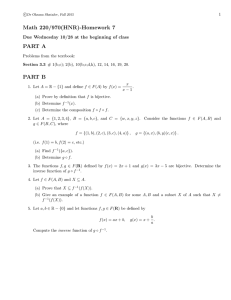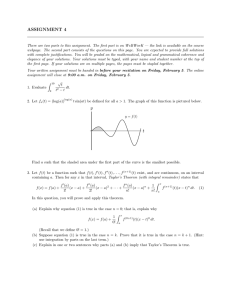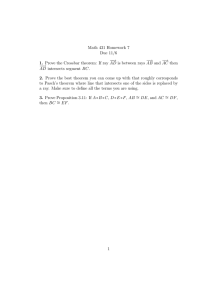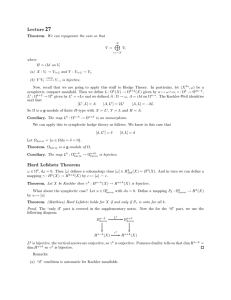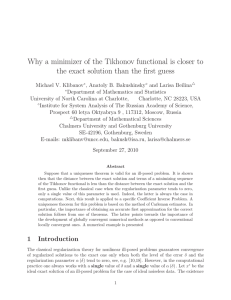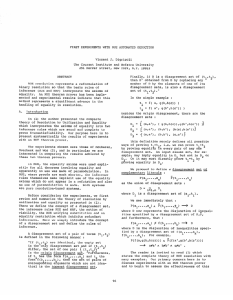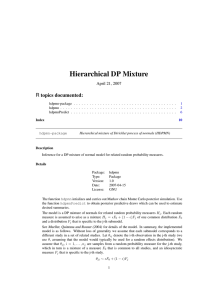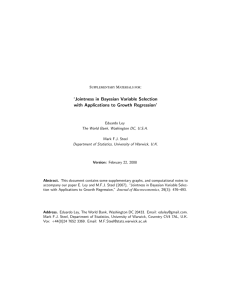Problem 19: Solution
advertisement
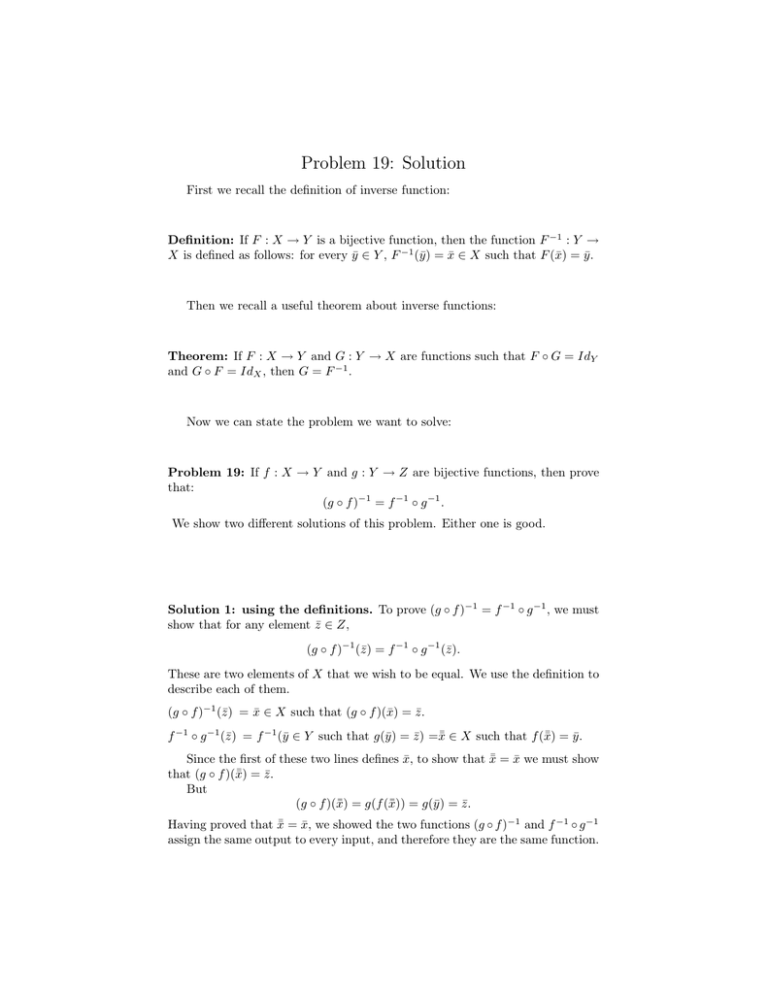
Problem 19: Solution First we recall the definition of inverse function: Definition: If F : X → Y is a bijective function, then the function F −1 : Y → X is defined as follows: for every ȳ ∈ Y , F −1 (ȳ) = x̄ ∈ X such that F (x̄) = ȳ. Then we recall a useful theorem about inverse functions: Theorem: If F : X → Y and G : Y → X are functions such that F ◦ G = IdY and G ◦ F = IdX , then G = F −1 . Now we can state the problem we want to solve: Problem 19: If f : X → Y and g : Y → Z are bijective functions, then prove that: (g ◦ f )−1 = f −1 ◦ g −1 . We show two different solutions of this problem. Either one is good. Solution 1: using the definitions. To prove (g ◦ f )−1 = f −1 ◦ g −1 , we must show that for any element z̄ ∈ Z, (g ◦ f )−1 (z̄) = f −1 ◦ g −1 (z̄). These are two elements of X that we wish to be equal. We use the definition to describe each of them. (g ◦ f )−1 (z̄) = x̄ ∈ X such that (g ◦ f )(x̄) = z̄. ¯ ∈ X such that f (x̄ ¯) = ȳ. f −1 ◦ g −1 (z̄) = f −1 (ȳ ∈ Y such that g(ȳ) = z̄) =x̄ ¯ = x̄ we must show Since the first of these two lines defines x̄, to show that x̄ ¯ that (g ◦ f )(x̄) = z̄. But ¯) = g(f (x̄ ¯)) = g(ȳ) = z̄. (g ◦ f )(x̄ ¯ = x̄, we showed the two functions (g ◦ f )−1 and f −1 ◦ g −1 Having proved that x̄ assign the same output to every input, and therefore they are the same function. Solution 2: using the theorem. If we assume the theorem, in order to show that (g ◦ f )−1 = f −1 ◦ g −1 it suffices to show that (g ◦ f ) ◦ f −1 ◦ g −1 = IdZ and f −1 ◦ g −1 ◦ (g ◦ f ) = IdX . For any z ∈ Z (g ◦ f ) ◦ f −1 ◦ g −1 (z) = g(f (f −1 (g −1 (z)))) = g(g −1 (z)) = z, therefore the first equality is verified. For any x ∈ X, f −1 ◦ g −1 ◦ (g ◦ f )(x) = f −1 (g −1 (g(f (x)))) = f −1 (f (x)) = x, therefore the first equality is verified and the proof concluded.
